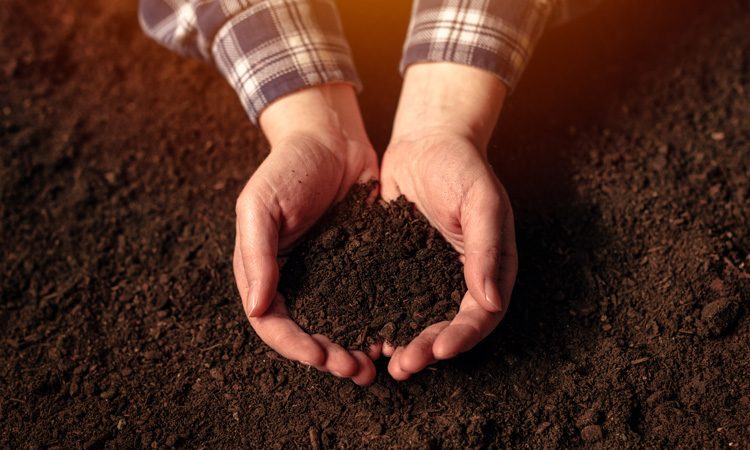Just how important is soil for the world’s food supply?
- Like
- Digg
- Del
- Tumblr
- VKontakte
- Buffer
- Love This
- Odnoklassniki
- Meneame
- Blogger
- Amazon
- Yahoo Mail
- Gmail
- AOL
- Newsvine
- HackerNews
- Evernote
- MySpace
- Mail.ru
- Viadeo
- Line
- Comments
- Yummly
- SMS
- Viber
- Telegram
- Subscribe
- Skype
- Facebook Messenger
- Kakao
- LiveJournal
- Yammer
- Edgar
- Fintel
- Mix
- Instapaper
- Copy Link
Posted: 4 December 2020 | Gideon Ashworth | No comments yet
In the latest edition of Talking Crop , Gideon Ashworth explains just how crucial good quality soil is for growing the crops we need to survive ahead of the UN’s World Soil Day on 5 December.


The Food and Agriculture Organization of the United Nations (FAO) has championed World Soil Day on 5 December for the past few years. It’s a topic that encompasses aspects from soil science to the wider topics of biodiversity, ethics and future global food security.
So, why the big deal? Why devote a day each year to it? You just bung a seed in some mud and it grows, right? Well, in a word, no.
First off, calling soil ‘mud’ is like referring to your favourite fine wine as ‘booze’, without appreciating the complexity of the elements, flavour profiles and deliberate controlled management that it takes to produce such finery. Soil is an acutely intricate combination of multiple elements and organisms that create the wondrous substance in which our crops are grown.
Like wine, wherever you go you can find good-quality soils and poor-quality soils. With our current human behaviours including intensive farming, (human-driven) climate change, and lack of education for agricultural best practices, we are inadvertently degrading the quality of many of our soils into the equivalent of a mass produced bland, low-quality wine – the kind of soil that will not produce healthy crops without chemical intervention. Just like a high-quality wine that complements a meal, so too does good quality healthy soil impact a meal – albeit as a silent partner.
All our crops, barring the hydroponically grown, are soil dependent. Our global food security, culinary enjoyment and nutritional wellness stems from our soils. Understanding and practicing good soil management is crucial to mitigate the effects of drought, soil erosion and nutrient leaching – and ultimately to grow healthy crops through the seasons, year on year.
So, what exactly is soil? It’s a blend of organic and inorganic matter, air and water that provides a substrate of suitable structure to buffer macro and micronutrients in which plants can grow. Scratch the surface of the (usually) dark brown matter that encases the habitable areas of the planet and you’ll be tickling the topsoil – the substance that most of us should be familiar with. Keep digging a vertical cross section for a metre or two and you’ll find an exquisite layer cake of different colours, consistencies and depths.
Each layer, or ‘soil horizon’, plays its own vital role in soil health. Each horizon has a unique structure, consisting of varying ratios of sediment, clay, organic matter and organisms, from the topsoil ‘A’ horizon all the way down to bedrock. The ‘A’ horizon (topsoil) is described by the words loam, clay and sandy, or a combination thereof. Soils and their horizons vary from region to region, and even across the same field.
The world’s soils are the biggest carbon store we’ve got – thus, changing land use and misguided agricultural practices have the capability to catalyse climate change exponentially (without even factoring in fossil fuel usage).
Furthermore, environmental pollutants, intensive farming, poor water management, exposed soils and overuse of fertilisers and pesticides all have their part to play in soil degradation – yet they are all within the grasp of human control. The driver behind World Soil Day is to raise awareness of the importance of our soils for future generations and for the quality of our foods in the present. After all, without healthy soils we won’t be able to grow healthy quality crops to sustain healthy humans.
About the author
Gideon Ashworth has extensive experience in primary agricultural food production and supply chain technical management, including the challenges of emerging ingredients and their associated emerging hazards. He currently works as Head of Food Defence at Bart Ingredients.
Related topics
Environment, Food Security, Pesticides, Regulation & Legislation, Supply chain, Sustainability
Related organisations
Bart Ingredients, Food and Agricultural Organization of the United Nations (FAO)
Related regions
Africa, Asia Pacific & Oceania, Central and South America, Central and South Asia, Europe, Middle East, North America, UK & Ireland








